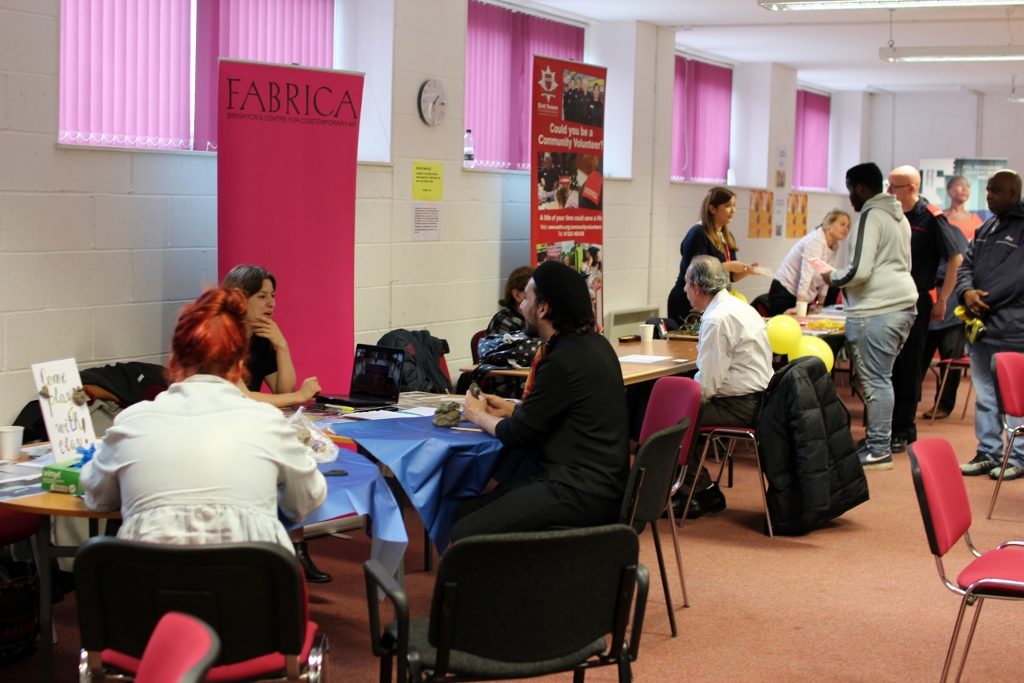By Cal Chester – Community Development Support Worker.
I began working with the Department of Health (DoH) funded project as a support and administrative worker in March 2016. In partnership with the DoH, we were looking for volunteers to work alongside our team across Brighton and Hove to help support health and wellbeing projects in the community and my role was to help co-ordinate this. It was an exciting opportunity as it gave me the chance to work across TDC with volunteers and workers from the youth team as well as with our BME worker.
I had been a volunteer with TDC myself since 2013 working on marketing, web updates and office administration. This led to an interest in community development work and I then began paid sessional work with TDCs ‘Citywide’ projects, which involved supporting a diverse range of local community groups such as the Community Buildings Network and ADHD Aware. The DoH project supporting volunteers with a health focus was a chance to see the volunteer process from a different angle and to bring my own experiences to the work.
Initially I attended a one-day volunteer course with the Brighton Housing Trust and went to London for the DoH’s new awards meeting, where I gained a good sense of the project and its aims. I was also able to hear from previous award recipients about their successful projects, and to meet others starting newly funded projects.
In addition to the basic administrative elements of the project we began by designing and creating interesting and attractive promotional material. I was quickly encouraged to take part in the volunteer recruitment process alongside Adam Muirhead, who manages TDC’s youth team.
We worked on shortlisting, interviewing and selecting volunteers and inducting them into TDC and the youth team. This meant working with students from both Sussex and Brighton Universities and we saw those volunteers go on to gain useful skills and experience and be of great benefit to the communities they volunteered in.
At the conclusion of the first year of the project and as part of a module I was studying alongside my role on ‘conducting Community Led Research’ (as a part of TDC’s C-ODE community development training course) we carried out our own research intended to give the volunteers a voice and contribute themselves. Volunteers also had the opportunity to reflect on the nature of volunteering by considering questions such as what they brought to the project, what they wanted from volunteering and how volunteering could improve their own health and wellbeing and that of the communities they are working in.
This was one part of a variety of techniques used to evaluate the effectiveness of the project – i.e. group work, 1-1, Interviews and celebratory events – all intended to encourage participation, inclusivity and to give us measurable impact of the health benefits of volunteering.
In addition to this more formal learning, we gained much insight and knowledge over the course of the project from promoting it at university volunteer recruitment and community development fairs and as part of local health and wellbeing events.
We also held an informal celebration of BME volunteers and have clearly seen the benefits for individual volunteers, watching them grow in confidence and knowledge. Simultaneously, we saw an increased awareness of TDC’s work amongst students and the wider community.
The shape of the project has changed over time to meet different needs and to build on the work of others in TDC. In October 2018, I had the opportunity to be involved in recruiting a new cohort of BME volunteers from both established local communities and from the student population. Working as a team, volunteers and colleagues at TDC worked together to deliver two very successful events – one focused on recruiting volunteers from BME backgrounds for local community groups and projects, and another promoting available help and support for the BME communities to help improve their health and wellbeing.
The volunteers at both events experienced an enormous growth in their confidence and a chance to use and develop their skill and this in turn had a positive effect on communities. This demonstrates once again that the work has benefits for both the volunteer’s health and wellbeing and for that of the community.

